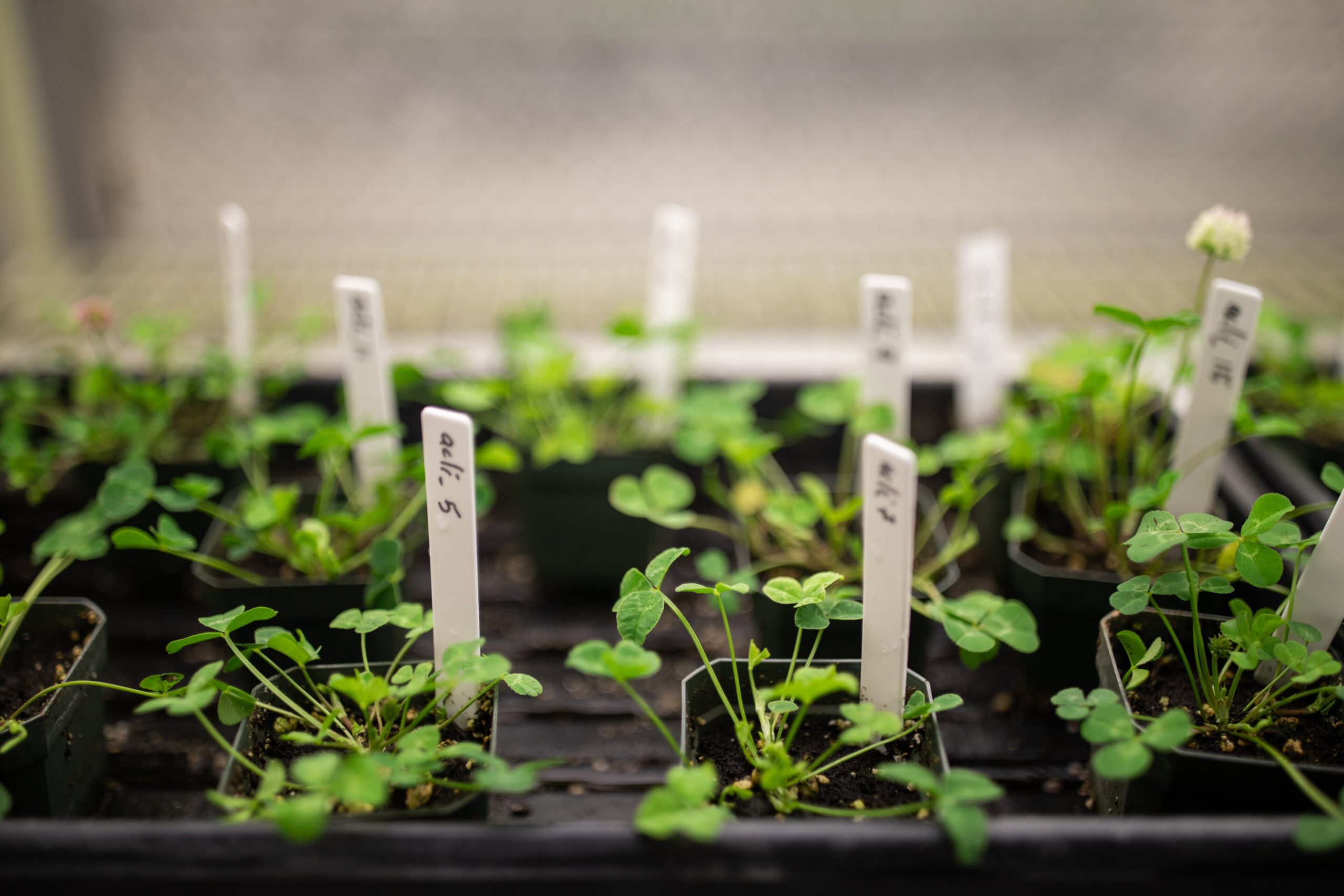A global collaboration led by University of Toronto Mississauga evolutionary biologists examined more than 110,000 white clover samples from 160 locations across the world, showing that the plant is evolving in direct response to environmental changes taking place in cities. Credit: Nick Iwanyshyn
Humans reshape the environments where they live, with cities being among the most profoundly transformed environments on Earth. New research now shows that these urban environments are altering the way life evolves.
A ground-breaking study led by evolutionary biologists at U of T Mississauga (UTM) examines whether parallel evolution is occurring in cities all over the world. In findings published in the journal Science, the Global Urban Evolution Project (GLUE) analyzed data collected by 287 scientists in 160 cities in 26 countries, who sampled the white clover plant in their cities and nearby rural areas.
What they found is the clearest evidence yet that humans in general, and cities specifically, are a dominant force driving the evolution of life globally. From Toronto to Tokyo, Melbourne to Munich, white clover is frequently evolving in direct response to environmental changes taking place in urban settings.
“We’ve long known that we’ve changed cities in pretty profound ways and we’ve dramatically altered the environment and ecosystems,” says UTM biology Ph.D. student and study co-lead James Santangelo. “But we just showed this happens, often in similar ways, on a global scale.”
The GLUE study illustrates that the environmental conditions in cities tend to be more similar to each other than to nearby rural habitats. In that sense, downtown Toronto is more comparable to downtown Tokyo in many ways than it is to surrounding farmland and forests outside of the city.
(From left) University of Toronto Mississauga biology professors Rob Ness and Marc Johnson, and UTM PhD student James Santangelo collaborated with more than 280 researchers worldwide to collect and analyze clover plants in cities around the world. The study provided the clearest evidence yet that humans are affecting evolution on Earth. Credit: Nick Iwanyshyn
Not only were researchers able to observe global adaptation to cities, they identified the genetic basis of that adaptation and the environmental drivers of evolution. White clover produces hydrogen cyanide as both a defense mechanism against herbivores and to increase its tolerance to water stress, and GLUE found that clover growing in cities typically produce less of it than clover in neighboring rural areas due to repeated adaptation to urban environments.
It is the changes in the presence of herbivores and water stress in cities that is pushing white clover to adapt differently than their rural counterparts.
That finding holds true for cities across various climates, and the implications reach far beyond the humble clover plant.
“This study is a model to understand how humans change the evolution of life around us. Cities are where people live, and this is the most compelling evidence we have that we are altering the evolution of life in them. Beyond ecologists and evolutionary biologists, this is going to be important for society,” says Rob Ness, an assistant professor of biology at UTM who co-led the project with Professor Marc Johnson and their Ph.D. student Santangelo.
GLUE examined white clover because it is one of the few organisms present in almost every city on Earth, providing a tool to understand how urban environments influence evolution.
Parallel adaptive evolution in white clover in response to urbanization. Credit: Sherry (Sheng Yu) An
Now that we know humans are driving evolution in cities across the planet, that information can be used to start developing strategies to better conserve rare species and allow them to adapt to urban environments, says Johnson. It can also help us better understand how to prevent unwanted pests and diseases from adapting to human environments.
For GLUE, this publication is just the beginning. Using the same techniques, collaborators collected more than 110,000 clover samples from 160 cities and nearby rural areas and have sequenced more than 2,500 clover genomes. It has created a massive dataset that will be studied for years to come.
And this unprecedented global collaboration began with a single Tweet.
“Nearly everyone we asked to collaborate said yes—and that was kind of remarkable, because we were asking people to take on a lot of work,” says Johnson, who co-ordinated the more than 280 other researchers who participated in the study. “Our collaborators recognized the importance of this project. There has never been a field study of evolution of this scale, or a global study of how urbanization influences evolution. It would have been impossible to do this without our global set of collaborators.”
Johnson also calls the project a model for inclusive science. The team was equally split between women and men and included not just established researchers, but also students at all levels and from all inhabited continents across the world.
“Urban cold islands” driving plant evolution in cities More information: James S. Santangelo, Global urban environmental change drives adaptation in white clover, Science (2022). DOI: 10.1126/science.abk0989. www.science.org/doi/10.1126/science.abk0989 Provided by University of Toronto
Citation: New, clearest evidence yet that humans are a dominant force driving evolution (2022, March 17) retrieved 1 April 2022 from https://phys.org/news/2022-03-clearest-evidence-humans-dominant-evolution.html
This document is subject to copyright. Apart from any fair dealing for the purpose of private study or research, no part may be reproduced without the written permission. The content is provided for information purposes only.
































